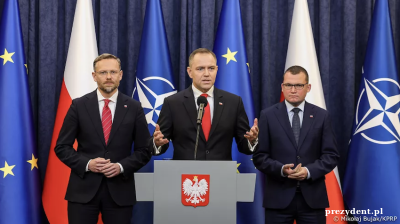The National Bank of Poland’s (NBP) decision to cut its main policy rate by 25 basis points on July 3, bringing it to 5.00%, caught most analysts off guard. Yet for those watching closely, the signals were already there. (chart)
“Of the 31 analysts polled by LSEG ahead of today’s decision, a majority of 23 had expected the NBP to leave interest rates on hold,” said Nicholas Farr, Emerging Europe economist at Capital Economics. “We were in the remaining minority of eight analysts that correctly predicted the decision.”
The move follows signs of growing division within the Monetary Policy Council (MPC), with some members advocating for a return to easing now, while others preferred to wait until September. The final outcome may have been swayed by recent data and global developments.
“A renewed softening in the latest wage growth data, a de-escalation of tensions in the Middle East, as well as an improvement in the outlook for Polish utility price inflation, may have helped to tip the balance on the MPC,” Farr said.
Although headline inflation surprised slightly on the upside in June, coming in at 4.1% year on year, underlying indicators point to an imminent decline. Capital Economics expects inflation to drop sharply to between 2.5% and 3.0% in July, helped by favourable base effects. That would place price growth comfortably within the NBP’s target range of 1.5% to 3.5% for the remainder of 2025.
The decision hints at a broader shift in the central bank’s stance, with more cuts likely to follow.
“We expect two further 25bp rate cuts by end-2025,” said Farr, predicting a year-end policy rate of 4.50%.
Markets and analysts will now be watching the NBP’s post-meeting communications and the press conference by Governor Adam Glapiński on July 4 for additional clues on the internal dynamics of the MPC and the likely path of future policy.
Data

Inflation slowing in the majority of Russia's regions
Annual inflation slowed in most Russian regions (74) in July despite the indexation of utility rates, the Central Bank of Russia (CBR) reported on August 22.

Domestic FX loans extended by Turkish banks breaking records
Government's return to orthodox economic policies caused lira interest rates to surge. Companies turned to FX loans. Caps were introduced but lending still boomed.

Some positive movement on Borsa Istanbul, but tread with care
Stay wary of "moustaches" setting bull traps.

Georgian exports hit record $3.8bn in January-July 2025
Exports in January-July 2025 totalled $3.8bn, but Georgia's trade deficit remained high at $6.5bn or 46% of foreign trade turnover.




